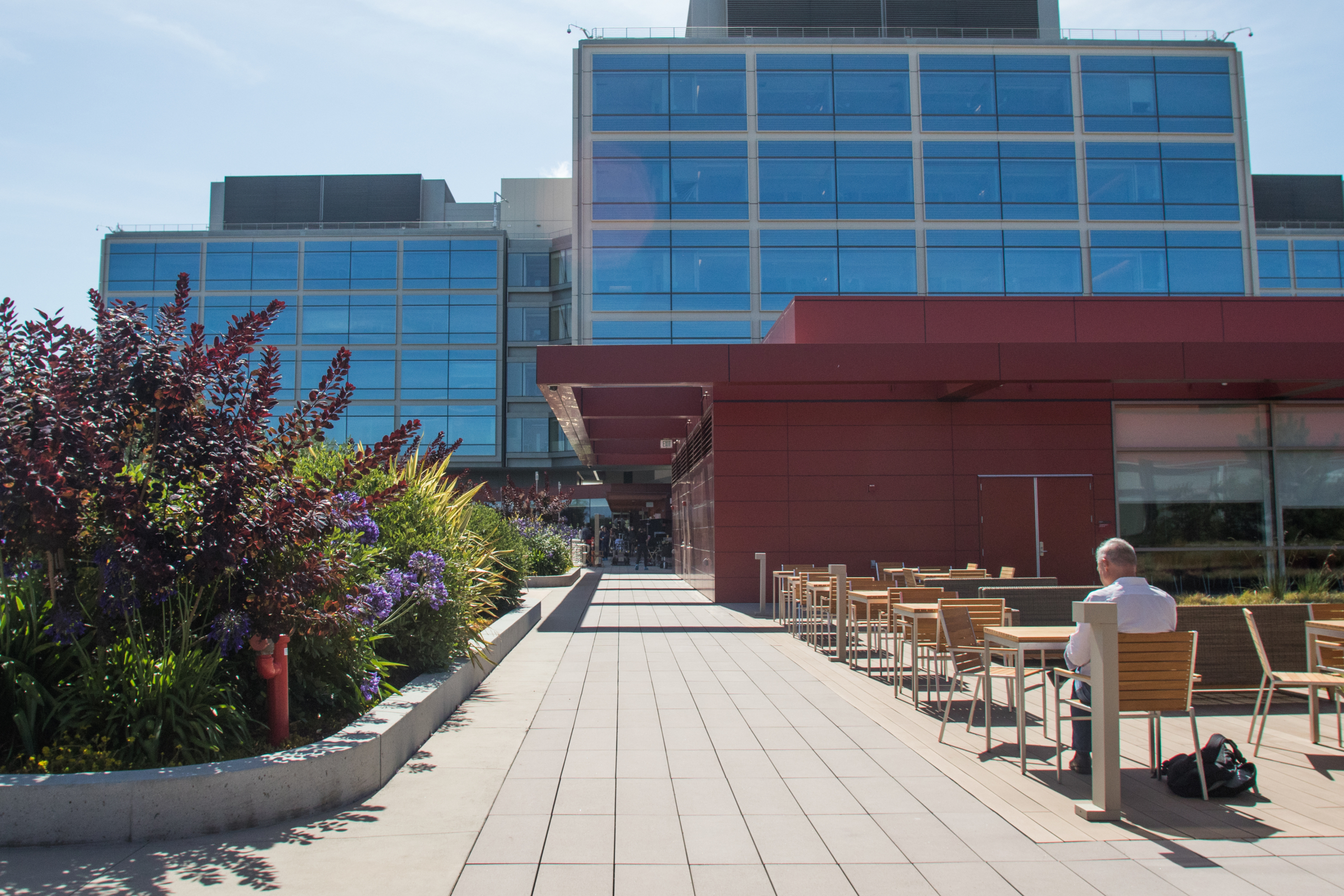Stanford University will not have to pay a fine for failing to meet the traffic-reduction targets that it was required to achieve as part of a deal that enabled a massive expansion of its hospital expansion.
It will, however, have to accelerate its efforts to get employees out of cars to avoid future penalties, the Palo Alto City Council agreed Monday.
By a 4-2 vote, with council members Greg Tanaka and Julie Lythcott-Haims dissenting and council member Vicki Veenker recusing, the council voted on Oct. 23 to amend the development agreement that the council and Stanford approved in 2011, a landmark deal that took years of negotiations and that allowed the university to rebuild and expand its hospital facilities. This included rebuilding Stanford Hospital and Clinics (now known as Stanford Health Care), renovating the Lucile Packard Children's Hospital and expanding the Stanford University School of Medicine.
In exchange, Stanford committed to getting at least 33% of the hospital employees to rely on alternative modes of transportation (anything other than driving alone) by 2021. The threshold would then rise to 35.1% by 2025. Failure to meet the established target for two consecutive years would lead to a $175,000 fine for each year after the first in which the hospitals fall short.
That's exactly what happened in 2021, 2022 and 2023, when Stanford saw its numbers for alternative transportation modes drop precipitously. After hovering above 33% for seven consecutive years between 2013 and 2019, the percentage of people who didn't drive alone to work fell to 28.8% in 2021 and to 19.9% in 2022 before partially rebounding to 25.6% in 2023, according to commute surveys that Stanford conducts each May.
Stanford attributed the drop to the COVID-19 pandemic, which led to service reductions among transit agencies and made people more anxious about taking public transportation. It requested that the target years be delayed so that the 33% threshold would apply to 2025 and the 35.1% threshold would kick in in 2028.
"For hospital employees, the burden of the pandemic was unique," Rachel de Guzman, vice president of planning, design and construction for Stanford Medicine, told the council during the Oct. 23 discussion. "In order to continue providing the best possible care to the community, employees needed to maintain their own health and safety, which often meant minimizing potential exposure to the virus, and in many cases switching to drive-alone commute."
De Guzman told the council that while things are starting to rebound, the hospitals will need additional time to meet their targets.
"Restoring previous transit habits lost in the pandemic will unfortunately take time," de Guzman said.
The council proved willing to give Stanford some more time, though not as much as it sought. Under the proposal made by Vice Mayor Greer Stone that was backed by most of his colleagues, the 33% target would be delayed until 2024 and the 35.1% target until 2026.
While Stone acknowledged the impact of COVID-19 on commute habits, he and his colleagues struggled to justify a three-year extension, which he said is neither necessary nor consistent with the development agreement.
"One additional year makes sense and gives them a little additional time between the interim and final target year," Stone said.
Council member Julie Lythcott-Haims called Stanford's explanation of the pandemic's impact on the commute "a little misleading." She noted that Stanford's numbers had begun to slip even before the pandemic, with the percentage of hospital employees relying on alternative modes going from 39.1% in 2017 to 38.1% in 2018 to 33.8% in 2019 (the university didn't do its survey in 2020, when the COVID-19 emergency disrupted commute patterns and service providers).
The fact that there were declines in alternative commute modes in 2018 and 2019 undercuts that argument that COVID-19 is solely to blame, she said.
"As much as we understand that the pandemic then went on to do further damage, the program was clearly in decline for the two years preceding the pandemic and I imagine that contributed to the motion in front of you," Lythcott-Haim said, alluding to the proposal to move up the target date.
Neither she nor any of her colleagues showed much appetite, however, for pushing ahead with financial penalties for the years 2022 and 2023. Insisting on the money, members acknowledged, would be legally challenging given the pandemic. Stanford had maintained that its failure to meet its targets in 2020 constitutes a permitted delay under the "force majeure" clause of the development agreement, which makes exceptions for unexpected circumstances beyond the parties' control.
Council members also specified as part of the vote that any money that the city collects from Stanford for trip reduction would prioritize the part of northwest Palo Alto that includes the hospitals and Stanford Shopping Center. Council member Pat Burt, who made that proposal, noted that the hospitals may have an easier time meeting their targets once Caltrain electrifies its train corridor and increases its service levels over the next two years.
"A dilemma for hospitals is they have shift workers who are there 24/7," Burt said. "So that's going to be a boost of an uncertain impact, but Caltrain is expecting a steep jump in ridership during that time."
The council's proposed revision will now go back to Stanford for review. It wasn't immediately clear if the hospitals would accept the revised development agreement or rely on the "force majeure" provision to obtain delays to enforcement of the existing development agreement. De Guzman said that Stanford will "explore its possibilities." Both she and the council agreed, however, that Stanford has both the resources and the expertise to meet its transportation goals.
"We have been successful. We can do it. What we're asking for is just a little bit more time to do it," de Guzman said.



Comments